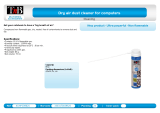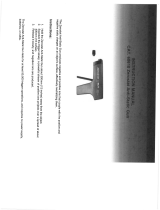
Warnings
6 3A4476F
SKIN INJECTION HAZARD
High-pressure spray is able to inject toxins into the body and cause serious bodily injury. In the
event that injection occurs, get immediate surgical treatment.
• Do not aim the gun at, or spray any person or animal.
• Keep hands and other body parts away from the discharge. For example, do not try to stop
leaks with any part of the body.
• Always use the spray tip guard. Do not spray without spray tip guard in place.
• Use Graco spray tips.
• Use caution when cleaning and changing spray tips. In the case where the spray tip clogs
while spraying, follow the Pressure Relief Procedure for turning off the unit and relieving
the pressure before removing the spray tip to clean.
• Do not leave the equipment energized or under pressure while unattended. Remove
battery and follow the Pressure Relief Procedure when the equipment is unattended or
not in use, and before servicing, cleaning, or removing parts.
• Check parts for signs of damage. Replace any damaged parts.
• This system is capable of producing 2000 psi (138 bar, 14 MPa). Use Graco replacement
parts or accessories that are rated a minimum of 2000 psi (138 bar, 14 MPa).
• Verify that all connections are secure before operating the unit.
• Know how to stop the unit and bleed pressure quickly. Be thoroughly familiar with the
controls.
EQUIPMENT MISUSE HAZARD
Misuse can cause death or serious injury.
• Always wear appropriate gloves, eye protection, and a respirator or mask when painting.
• Do not operate or spray near children. Keep children away from equipment at all times.
• Do not overreach or stand on an unstable support. Keep effective footing and balance at
all times.
• Stay alert and watch what you are doing.
• Do not operate the unit when fatigued or under the influence of drugs or alcohol.
• Do not alter or modify equipment. Alterations or modifications may void agency approvals
and create safety hazards.
• Use only in dry locations. Do not expose to water or rain.
• Use in well-lit areas.
•
Make sure all equipment is rated and approved for the environment in which you are using it.
BATTERY AND CHARGER COMPATIBILITY HAZARD
•
Only use DEWALT brand 20V Max batteries and battery chargers with this tool.
• READ ALL INSTRUCTIONS included with this tool regarding the safety and usage of
DEWALT batteries and battery chargers.
PRESSURIZED ALUMINUM PARTS HAZARD
Use of fluids that are incompatible with aluminum in pressurized equipment can cause serious
chemical reaction and equipment rupture. Failure to follow this warning can result in death,
serious injury, or property damage.
• Do not use 1,1,1-trichloroethane, methylene chloride, other halogenated hydrocarbon
solvents or fluids containing such solvents.
• Do not use chlorine bleach.
• Many other fluids may contain chemicals that can react with aluminum. Contact your
material supplier for compatibility.























